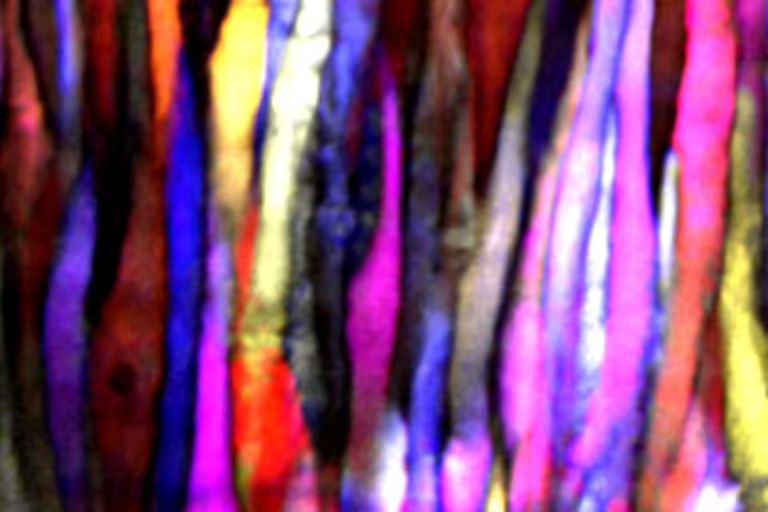
Award-winning work “Calcium Rainbow”
Charlotte Buckley, University of Strathclyde, British Heart Foundation – Research review
In this image, the muscle cells lining an artery resemble a stained glass window and is the winner of the British Heart Foundation’s annual Reflect on Research competition. Scientists funded by charities have submitted some of the most striking images from their research into heart and circulatory conditions.
First place winner Charlotte Buckley from the University of Strathclyde, UK, researched how cells in the walls of arteries respond to calcium levels, and how this can lead to high blood pressure, stroke and dementia. I am doing it. Fluorescent dyes indicate calcium levels at different times during recording. Blue indicates this mineral being released from intracellular stores first, followed by subsequent releases: purple, pink, red, orange, yellow, and white.

“The driving force of life”
Agustina Salis Torres, University of Edinburgh, British Heart Foundation – Research review
Another shortlisted image, by Agustina Salis-Torres of the University of Edinburgh in the UK, also shows muscle cells lining blood vessels. The nucleus containing genetic material is shown in blue, and calcium is shown in green. Mitochondria, the energy-producing parts of the cell, are stained yellow and orange.

“Creating a new wave of AF research”
Aaron Johnston, University of Oxford, British Heart Foundation – Research review
The image above shows cells taken from the heart of a person whose heart beats irregularly due to a condition called atrial fibrillation (AF). The orange and yellow glowing threads help cells interact with each other and highlight a protein called filamin A when conditions change. The blue oval indicates the nucleus of the cell. Aaron Johnston, from the University of Oxford, who took the images, hopes that understanding how cells change during atrial fibrillation could lead to new treatments.

“Blooming development”
Victoria Rashbrook, University of Oxford, British Heart Foundation – Research review
Victoria Rushbrooke from the University of Oxford, who studies how pregnancy and infant health affect heart development, captured images of developing mouse fetuses during mid-pregnancy. It resembles a blooming tulip, with pink “petals” growing up to the head, green “stem” extending to form the body, and green “root” representing the placenta.

“Toothbeat! Bridging oral and heart health”
Susanth Alapati, University of Aberdeen, British Heart Foundation – Research review
Susanth Alapati from the University of Aberdeen, UK, highlighted that poor dental hygiene can allow bacteria to enter the bloodstream, which can increase inflammation in the heart and arteries, increasing the risk of heart disease. I created this image for this purpose. Staphylococcus Bacteria that live in the mouth were used to shape the teeth, and the heart was formed using bacteria called periodontal bacteria. PorphyromonaS. Alapati studies the connection between oral health and heart health to find ways to prevent heart disease.
topic:
(Tag to translate) heart

